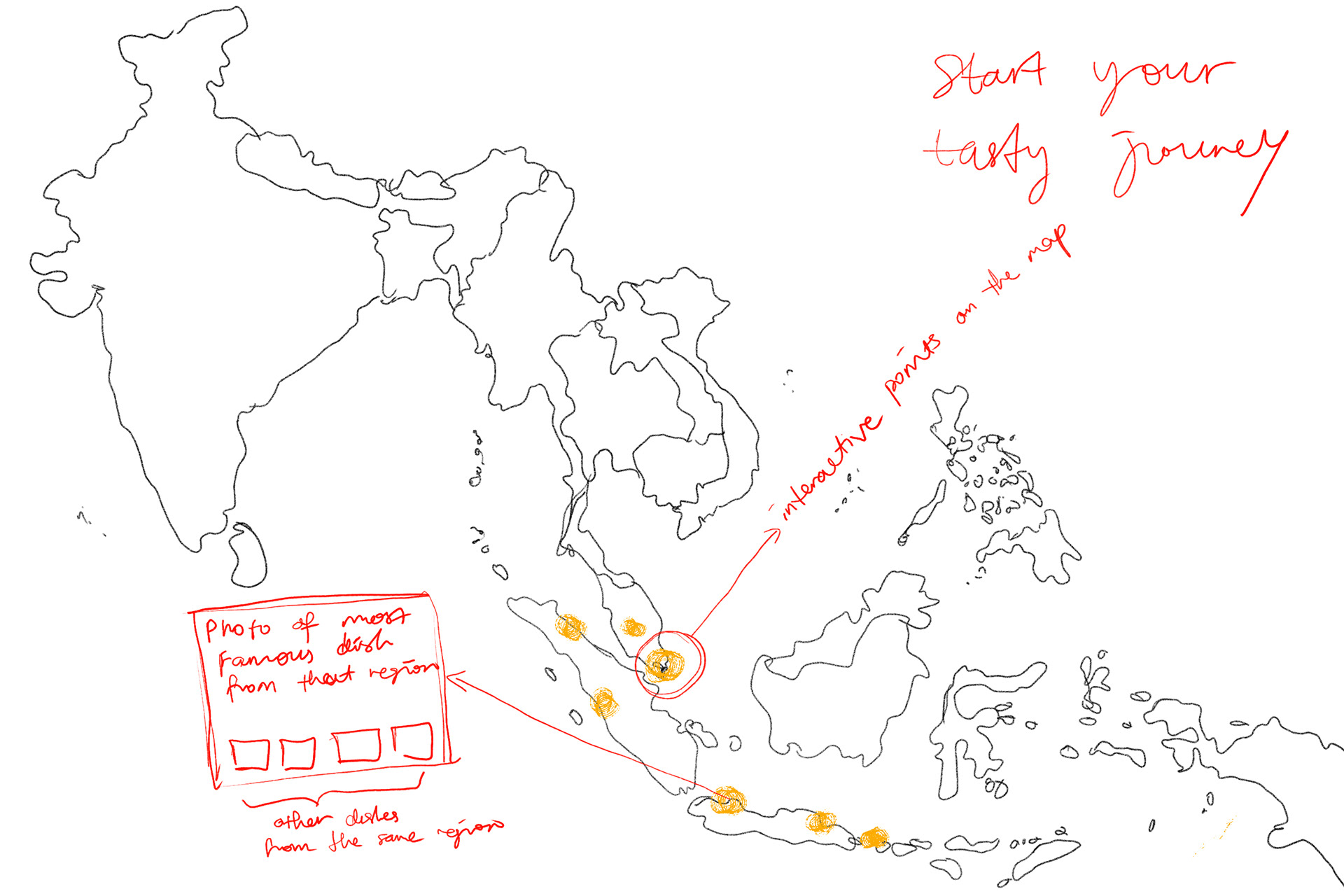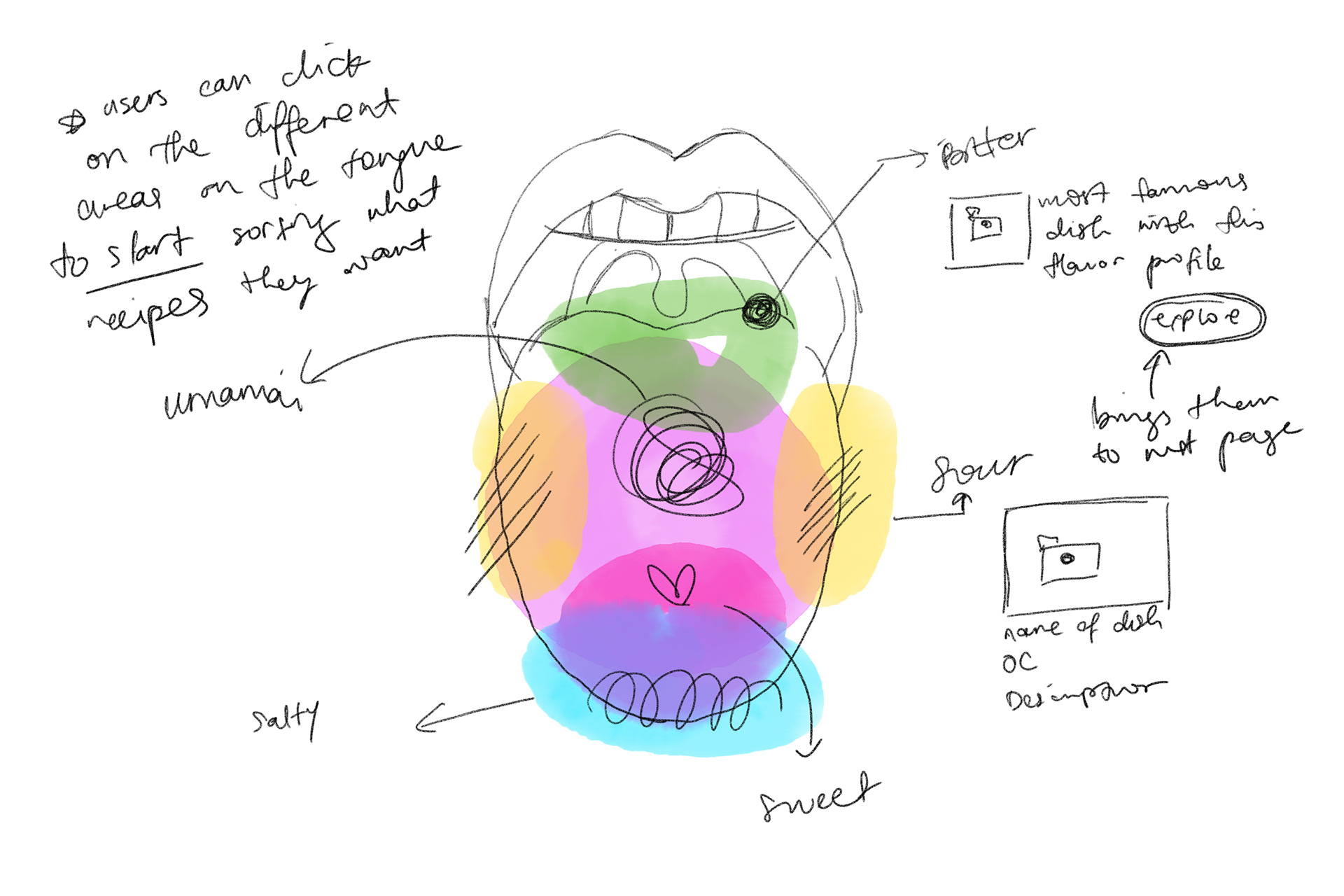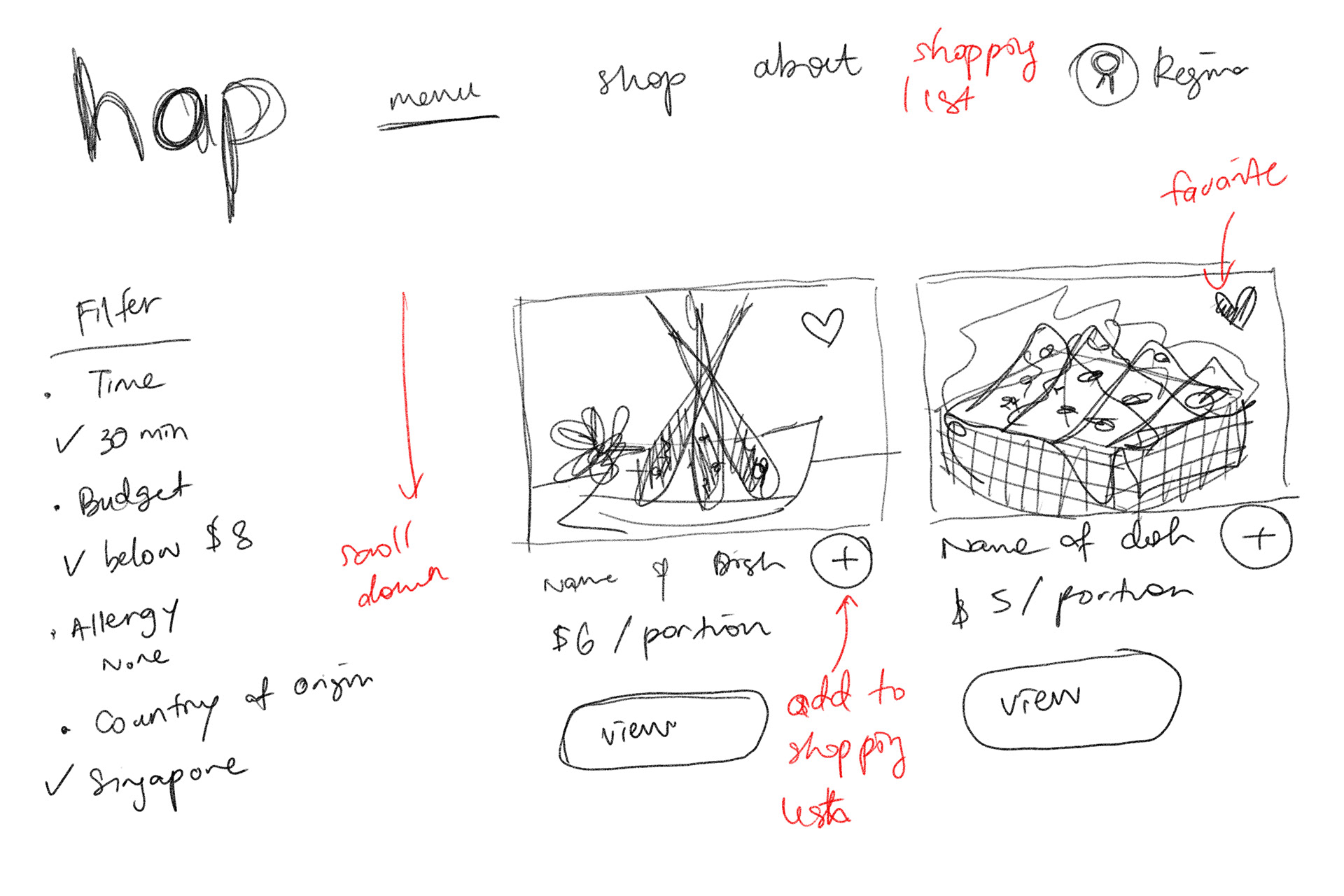Your most reliable Southeast Asian recipe-sharing platform that utilizes commonly found ingredients in Toronto, so you can eat your homesickness away.
"According to Barthes food is considered to be multidimensional, as something that shapes us, our identities, and our cultures and in the end, our society."
- Vatika Sibal, Food: Identity of Culture and Religion, 2020
Role: Project Owner, Experience Architect, Visual Designer, UX Researcher
Duration: June - August 2022
Tools: Adobe XD
Problem Definition
How might we reduce the stress and sense of isolation experienced by homesick newcomers from Southeast Asia by enabling them to recreate nostalgic and authentic recipes by using ingredients that are readily available to them in Toronto?
Choropleth of Toronto that shows where Southeast Asians reside and where specialty grocery stores and restaurants are located.
Context
According to the statistics, about 7% of Toronto’s ethnic population is Southeast Asian. In 2021, Canada welcomed 401.000 immigrants and Toronto, being one of the country’s most attractive cities to live, work and study, is one the top destinations for immigrants. When an individual leaves their home countries for any reason, they are bound to experience homesickness. It is commonly assumed that symptoms of homesickness will go away on its own. Based on user interviews, it is evident that it doesn’t go away. In the initiation and discovery phase of this project, I spoke to a mix of newcomers and long time immigrants from Southeast Asia. Homesickness is something that even longtime immigrants experience. It is also easy to assume that the effects of homesickness are mild emotional distresses. However, studies show that in severe cases, the suffering individual will experience a deterioration in social and intellectual performance. Food is one of the best ways to alleviate homesickness because it is an activity that engages all five senses and according Barthes, food is considered to be multidimensional, as something that shapes identities, cultures and society.
The next question you might have is, then why don’t the target user groups just go to a Southeast Asian restaurant and consider the homesickness healed? In the choropleth here, you can see how the current “solutions” such as restaurants and specialty grocery stores are not strategically located. Unlike other ethnic groups, Southeast Asians are much more spread out and the enclaves that have been identified are shown in red. It is clear that the current solutions are not very accessible to the target user. In addition to being inaccessible, the food served in SEA restaurants do not taste authentic because the business has to cater to other tastes, in short, the flavor has been watered down. The prices of these dishes are also on the more expensive side, which means that the target user, who is budget conscious cannot consume it as often as they like.
Proposed Solution
One of the core problems that my users face is the fact that many of the exotic ingredients they used in their home countries are very difficult to find in Toronto, therefore, my solution to this problem is to create a recipe-sharing website that features nostalgic Southeast Asian recipes with authentic flavours that are made with ingredients that are readily available in Toronto. Each recipe has two ingredient lists, one called “Traditional” and the other is called “Toronto Equivalent”.
There will always be limitations in every project. I had to consider the facts that I only have 4 months from start to finish, which means that research, conceptualizing, designing, testing, and finalizing the prototype has to be completed within that time frame. In addition to those deliverables, I had to work on a business document and an analytics strategy to measure the success of HAP. I worked on this project on my own and while I had peers who I consulted with, I had to do everything on my own. Lastly, the solution has to be feasible, so if I was given a budget to realize this project, can I do it? I think so.
The Users
HAP caters to two user groups; the peer producer and the peer consumer. That being said, it does not mean that an individual can only be one of them. The peer producer shares modified Southeast Asian recipes that still taste authentic. The peer consumer, which is a newcomer relies on the peer producers to share their knowledge and experience in the kitchen. The peer producer have been living in Toronto for quite some time and thus they have had the time to experiment with substitute ingredients for what the original recipes call for.
Unique Value Proposition
Each recipe on HAP comes with two ingredient lists, one called “Traditional” and the other is called “Toronto Equivalent”. The purpose of this feature is to help users learn how to achieve the same flavour profile using substitute ingredients. In addition to the dual ingredient list, HAP specializes in Southeast Asian cuisine, unlike its competitors.




Paper Prototype Sketches
The Process
Research
The goal for this phase is to accurately define the problem and create my unique value proposition by uncovering how and why current solutions are inadequate for the users. At this stage, I created and distributed surveys to people who represent my target users. User interviews and a competitive landscape analysis were also conducted.
Design
At the beginning of this stage, I started with a paper prototype. The goal is to experiment multiple times so that the final design is as interactive, efficient, and intuitive as possible. Prior to wireframing, I determined the products key features, the key moments users will experience on it, the user journey, site map, information architecture and visual branding identity. Once the wireframe is validated through user testing, I created the low-fidelity prototype. And after that is accepted by the users, I produced the final prototype.
Testing
This phase and the design phase go hand in hand. Every deliverable completed in the design phase were always tested. Because I have a user-centric design approach, I want to validate all my designs. As the creator, I have no problem with using the product, but if I don’t test it, the same cannot be said for my users. I want my users, regardless of their technology literacy, to have an enjoyable experience and the only way I can measure it as of now is to diligently test every iteration.
Design Documentation on Miro
Conclusion
HAP is my passion project, and as of today, I am still working on it. I believe that an interactive product will never be truly finished because the demands and requirements of users are continuously changing. It is my responsibility to keep up with them and cater to their needs. This has been a steep learning curve and it will continue to be. I enjoyed every process that I had to go through because no matter how challenging they were, I can confidently say that I have successfully accomplished them.
